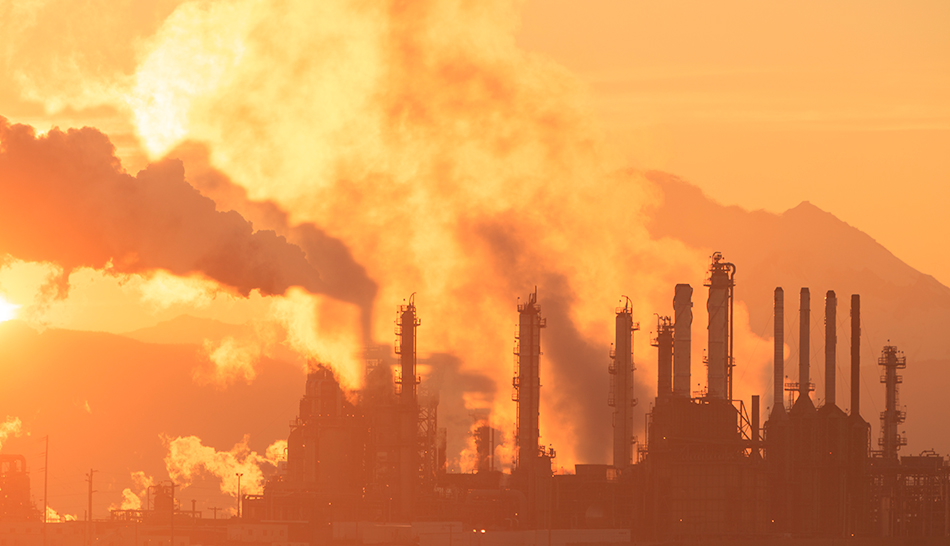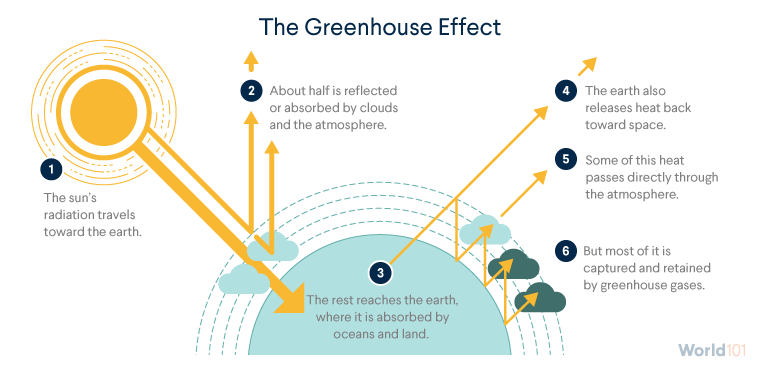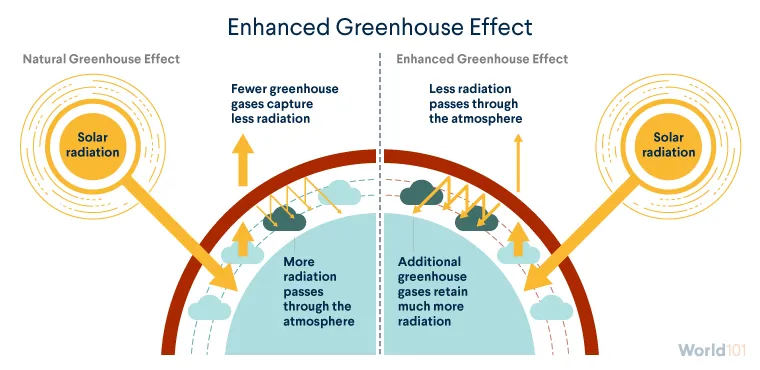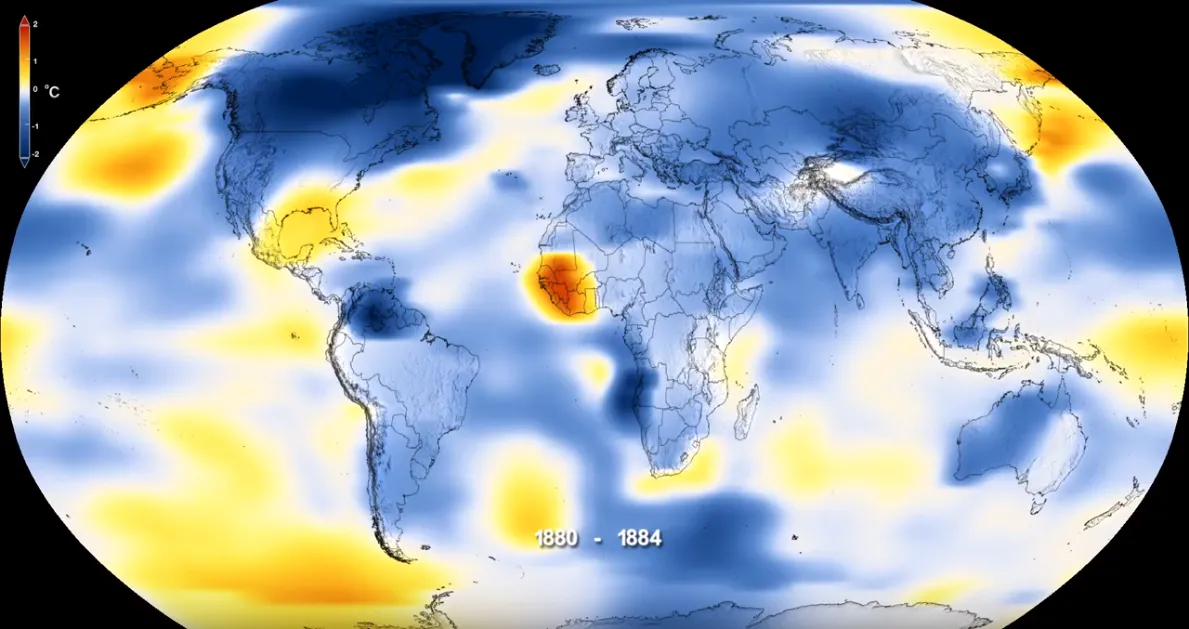The Greenhouse Effect
How do greenhouse gas emissions contribute to global warming? Learn why the world is getting warmer in this free climate change resource.
What is the greenhouse effect?
The greenhouse effect is a natural process responsible for keeping the earth at the temperature needed to sustain life. Acting just like the glass walls of a greenhouse, gases like carbon dioxide, methane, and nitrous oxide trap the sun’s heat in the atmosphere and prevent it from escaping into space.
About half of the sun’s radiation that travels toward the earth never makes it to the earth’s surface. Clouds and the atmosphere reflect about one-third of the radiation back toward the sun, and they also absorb another 20 percent. The rest of the radiation—about 50 percent—reaches the earth, where it is absorbed by oceans and land. This keeps the earth warm and sustains plant, animal, and human life. The earth also releases heat back toward space. Some of this heat passes through the atmosphere, but most of it is captured and retained by greenhouse gases before it can escape. This is the mechanism that keeps the earth warm.
Normally, the greenhouse effect keeps the earth just warm enough to sustain life. Scientists say that without the greenhouse effect, the average temperature of the earth would drop to as low as −18˚C (0˚F), compared to the twentieth-century average of 14˚C (57˚F).
What is the enhanced greenhouse effect?
The greenhouse effect has supported life on the earth for millions of years. Today, however, the greenhouse effect is growing stronger as human activities such as deforestation and fossil fuel use release more and more greenhouse gases into the atmosphere. This traps greater amounts of the sun’s radiation, which contributes to rising temperatures, also known as global warming.
In 2021, the United States alone emitted 13.9 trillion pounds of greenhouse gases. For reference, that weighs more than 18,000 Empire State Buildings—and the United States is not even the biggest emitter. In 2019, China emitted nearly twice as much greenhouse gas as the United States did that year. China is the world’s top global emitter, accounting for 27.79 percent of global emissions as of 2021. By comparison, the United States accounted for 12.74 percent of emissions that same year. Other major emitters include India, the Russian Federation, Japan and Brazil.
Due in large part to this enhanced greenhouse effect and as a result of growing emissions, the world today is more than 1˚C (1.8˚F) warmer than it was in the nineteenth century. While 1˚C may seem hardly noticeable on a sunny day, countries are already seeing the severe effects of planet-wide warming at this level. Heat waves are lasting longer, crop yields are shrinking, and rising sea levels are threatening coastal areas.
Scientists warn that human activity will likely raise global temperatures to 1.5˚C (2.7˚F) above nineteenth-century averages by 2050. Without a significant reduction in greenhouse gas emissions, global temperatures could even increase by 2˚C (3.6˚F). Should this happen, the results would be catastrophic: for example, nearly all coral reefs could die out, and sixty million more people could experience severe drought.
Although this future may seem far off, climate change is already worsening wildfires in the western United States, intensifying cyclones in Mozambique, and reducing crop production in Vietnam.






